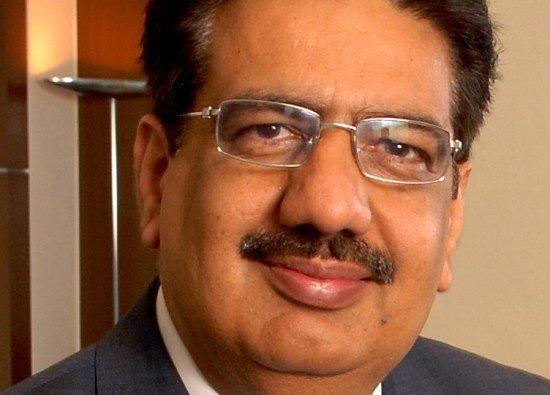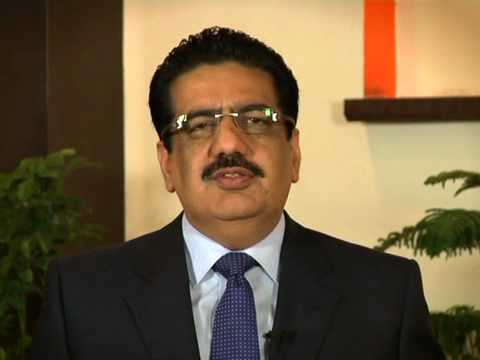Catalyst Actions

I presume by now you would be saying that Vineet, it’s too hard to believe that this works. I'm not saying that it works. Let me share with you some experiments we did at HCL, let me share with you how we did it, let me share with you the results of those experiments, but upfront, let me say that I believe they aren’t just experiments, they are small catalyst actions.
Some of them we have got right, a lot of them we have got wrong, but the very fact that a few we got right have created huge value for HCL. The reason I'm talking to you is because I believe we are only ten percent done and ninety percent still needs to be discovered. I'm hoping that through this communication, I will be able to reach out to many many bright minds out there who would learn from what HCL has done, and also contribute to the thinking within HCL.
I'm very happy for HCL to be the base for the experiments and for your ideas because we are looking for new ideas where we can continue our experiments going forward. At HCL we came up with a philosophy five years ago called Employees First, Customers Second. Yes Employees First, Customers Second. The philosophy is the same as I explained; that the employees are in the value zone. They are the people who are creating the true value for our customers. By the management holding itself accountable to the employees, we actually create higher value for our customers compared to organizations where the CEO is playing golf with another CEO.
That resulted in our articulation with our customers that employees come first for the management and the organization and customers come second. By that we mean that if you follow this philosophy the customers will automatically come first.
Now before I talk about what we did, let me talk about the results. We are the fastest growing IT services company based in India. In recession we grew twenty one percent year on year, that is in calendar year 2009 over 2008 when everybody was actually de-growing and demonstrating negative growth both in revenues and income. Our customer satisfaction went up by 43 percent during the recession. We were declared number one in employee satisfaction across various surveys in various countries, Business week lists us in the five most emerging companies to watch out for, and our management style of Employees First, Customers Second is taught across the world. Those are the results.
But how did we get there? What are the experiments which you could potentially learn from? Remember I talked about a catalyst action. The first catalyst action is a story of an ant. An ant is an ant is an ant. It can't be a fast walking ant, a rich ant, an ant with a Mercedes or a flying ant - an ant is an ant. It is very important for organizations, as a starting step, to want to be a butterfly. If you want to be a butterfly, not only do you have to be willing to be a butterfly, but you have to stop being an ant. Therefore the first catalyst thought for you to think about is that there are no half-baked measures. So when you execute any of the catalyst actions which I talked about, you need to try and create conviction within yourself that yes that’s what I want to do and take it to the extreme. If you don’t push the envelope and take it to the extreme, but instead do half-baked actions, I don't think transformation will happen. When you decide you want to be a butterfly, stop being an ant. That’s my first catalyst advice.
The second is the most difficult part of transformation ‘How do you make the reverse accountability happen?’ I think there is an understanding that there are power centers and value centers. If you understand power centers, these are largely based around enabling functions; HR, Finance, Administration, not because they want to be, but because the controls are so important that they create power centers in those organizations. And to get anything done in these organization from the power center is a long exercise. So our catalyst action in HCL was to create what we call a Smart Service Desk, a trouble ticketing system where any employee can open a trouble ticket on any of the enabling functions or even me as a CEO, and there is a limited time in which we have to close the ticket. It’s the employee who actually closes the ticket. That’s one catalyst action which inverted the pyramid of the power centers and suddenly power centers became what I call service centers.
Let's talk about the managers, as I call it, the Hand of God, what do I mean by Hand of God? It is the Hand of God because the manager has all the financial information, and the manager can make this powerful phone call to the enabling functions to make the magic happen for you. Because the manager has so much power in his hands he is the Hand of God, which will help you move up your career. That’s the accepted norm within a lot of organizations. Unfortunately, true.
So how do you destroy that? You destroy that by first making the information available at every desktop. So you destroy what I call the information power center by a huge amount of automation of financial information data that is honestly exhibited in the organizational communication channels.It is transparant and open. The second thing you do is making the management as accountable to employees. We experimented with the 360 degree tool, and I say this is an experiment because this is only a five year old experiment and I think we need to do a lot more to declare success.
We said that instead of discovering leaders, leaders should emerge. And the way leaders could emerge is by their influence on the influence zone, which is the employees. So if we ask the employees to do the 360 degree of the managers, we find that employees are not interested in doing it because they think what is in it for me? So we said, what happens if we, the managers are asked to show the results of the 360 degree survey to the employees who gave the survey? Suddenly we made the connection, we made the collaboration happen.
So I started this exercise in 2005, and for the first time in 2005 there were 30,000 employees in HCL. Today we are 57,000 employees. I made my 360 degree available to all employees - the people who gave me feedback and the people who did not give me feedback. And I said that that feedback is so important for me that it will bring about a change in the way I manage, because that is my constituency, that is the place I want to create value. When the managers saw me doing it, they gained trust, and started saying that “Hey why don’t we do it, that is a great way of communicating with my employees and getting their feedback as more and more people do it”.
Today in HCL there are 3,500 managers who participate in the 360 degree survey and they share their results with all the employees who gave them feedback. What does that mean? That means two things, first, as a CEO and as a Manager, when you are sharing your 360 degree you started the process of reverse accountability. Once the feedback comes and it is out in open, you clearly know who are man managers, and who are not man managers, who are supposed to be good as individual contributors like the technical functions. Now because the result is public, you do not use it for evaluation, you use it only for development purposes. The leaders will automatically move towards higher man management roles or higher individual contributor roles depending on the feedback they are getting.
I do not believe that in HCL, we could have found any other way of inverting this pyramid so effectively, discover emerging leaders and get the leaders to automatically gravitate towards their area of strength. That is another catalyst we used which is very effective.
Let’s talk about how we do transition catalyst and experiments we did of handing over the charge or control to the employees and giving the charge to them to bring about a change. I think the first important experiment which I did, and I don’t know whether you want to do that or not, was to demolish the concept of this corner office.
So, in 2006, I went in front of all our employees in groups of 4000 and 5000 and danced in front of them. Now I can tell you that I can’t dance for nuts, the reason I did that is, there is so much perception gap, there is so much halo around the CEO that you really cannot have a decent conversation with the CEO. That is true with the managers too, so don’t say that this is a CEO conversation and it is not relevant to you as a Manager. There is so much halo around even a manager that the employee doesn't have a decent conversation with you. And to level the field, you can dance, you can do whatever it is, but it is important that before you have a conversation, you level the field and that's one of the catalysts which I used.
The second catalyst I used very effectively is what I call the ‘You and I conversation’ where I not only have a conversation with the employees on an open blog, it is so open that anybody who is asking the question, his name is shown to all the employees and when I answer the question that is also shown to all the employees. Not one question is positive on the blog, every single question is negative, and if you read it you will believe that HCL is in a mess. But the very fact that we wash the dirty linen in public gives so much confidence to the employees, that this company means business, the CEO and the management of the company is standing accountable and there is a reverse accountability automatically set. There are many many other such catalysts we have employed in HCL and, as I said, some have worked but I think this experimentation journey in Employees First, Customers Second has to continue.
I don't think we have all the answers, I don't think we even have all the questions. Through this mixed channel, I'm looking forward to an ability to be able to tap into your bright thinking, your bright ideas to help me transform HCL, to make it faster, grow better for the employees to feel happy, for all of us to be able to create value which we so so need in the world today.


